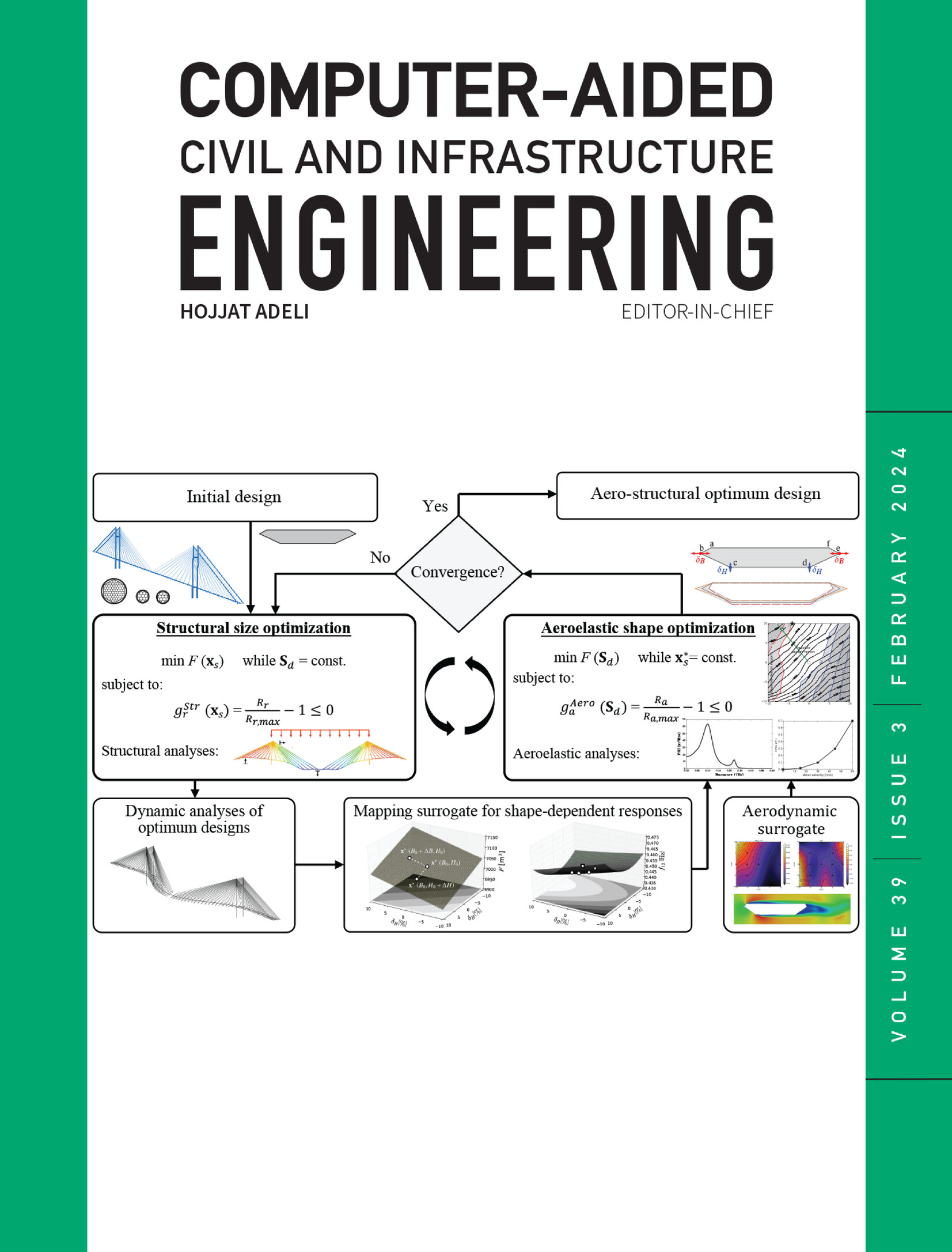基于增量梁柱方程和物理信息神经网络的预应力混凝土梁参数识别
IF 8.5
1区 工程技术
Q1 COMPUTER SCIENCE, INTERDISCIPLINARY APPLICATIONS
引用次数: 0
摘要
本文从静态挠度方法的角度探讨了一种识别预应力(和弯曲刚度)的新方法,并通过阐明长期和短期行为的机制推导出增量梁柱方程(iBCE),特别强调了忽略长期挠度的物理系统,包括自重和等效横向载荷。它允许将测量从现实世界缩放到物理系统的相应无维形式。该方法首先使用在现实世界中观察到的参数和变量构造方程的非齐次项。随后,利用阶梯加载过程中增量荷载诱导的二阶理论,完成了预应力和抗弯刚度的解耦与辨识。该识别算法是通过将iBCE的无量纲形式与物理信息神经网络相结合来构建的。在没有任何额外正则化的情况下,通过9个不存在非线性关系的实例验证了该方法的合理性和适应性。一系列全面的系统研究表明,解耦算法可以达到较高的精度。当一个机械参数,如弯曲刚度或预应力,已知并用于识别其余参数时,这种精度是可能的。当两个机械参数都未知时,投入更多的训练成本可以实现多参数的逆识别。即使在1%的噪声水平下,两个机械参数的解耦和识别也能达到合理的精度。这种方法避免了在求解增量微分方程和超越方程的正逆问题时的传统局限性。本文章由计算机程序翻译,如有差异,请以英文原文为准。
Parameter identification in prestressed concrete beams by incremental beam–column equation and physics-informed neural networks
This paper explores a novel methodology for identifying prestress force (and bending rigidity) from the perspective of static deflection methods and derives an incremental beam–column equation (iBCE) by elucidating the mechanisms underlying the long- and short-term behaviors, with particular emphasis on a physical system that disregards long-term deflections, including self-weight and equivalent lateral loads. It allows for the scaling of measurements from the real world to the corresponding nondimensional form of the physical system. The methodology begins by constructing the non-homogeneous terms of the equations using parameters and variables observed in the real world. Subsequently, utilizing second-order theory induced by incremental loads during step loading, the decoupling and identification of prestress force and bending rigidity are accomplished. The identification algorithm is constructed by integrating the nondimensional form of the iBCE with physics-informed neural networks. Without any additional regularization, the rationality and adaptability of this methodology are validated by nine examples that exhibit no nonlinear relations. A comprehensive series of systematic studies indicates that high accuracy can be achieved with the decoupled algorithm. This accuracy is possible when one mechanical parameter, such as bending rigidity or prestress force, is known and utilized to identify the remaining parameter. When both mechanical parameters are unknown, investing more in training costs enables the inverse identification of multiple parameters. Even with a 1% noise level, reasonable accuracy in the decoupling and identification of two mechanical parameters can be achieved. This methodology avoids the traditional limitations associated with solving the forward and inverse problems of incremental differential equations and transcendental equations.
求助全文
通过发布文献求助,成功后即可免费获取论文全文。
去求助
来源期刊
CiteScore
17.60
自引率
19.80%
发文量
146
审稿时长
1 months
期刊介绍:
Computer-Aided Civil and Infrastructure Engineering stands as a scholarly, peer-reviewed archival journal, serving as a vital link between advancements in computer technology and civil and infrastructure engineering. The journal serves as a distinctive platform for the publication of original articles, spotlighting novel computational techniques and inventive applications of computers. Specifically, it concentrates on recent progress in computer and information technologies, fostering the development and application of emerging computing paradigms.
Encompassing a broad scope, the journal addresses bridge, construction, environmental, highway, geotechnical, structural, transportation, and water resources engineering. It extends its reach to the management of infrastructure systems, covering domains such as highways, bridges, pavements, airports, and utilities. The journal delves into areas like artificial intelligence, cognitive modeling, concurrent engineering, database management, distributed computing, evolutionary computing, fuzzy logic, genetic algorithms, geometric modeling, internet-based technologies, knowledge discovery and engineering, machine learning, mobile computing, multimedia technologies, networking, neural network computing, optimization and search, parallel processing, robotics, smart structures, software engineering, virtual reality, and visualization techniques.

 求助内容:
求助内容: 应助结果提醒方式:
应助结果提醒方式:


